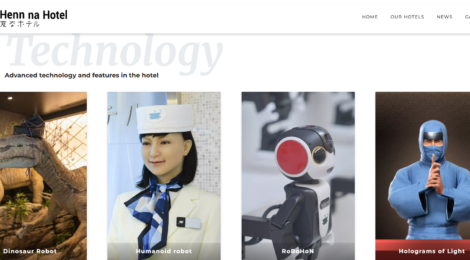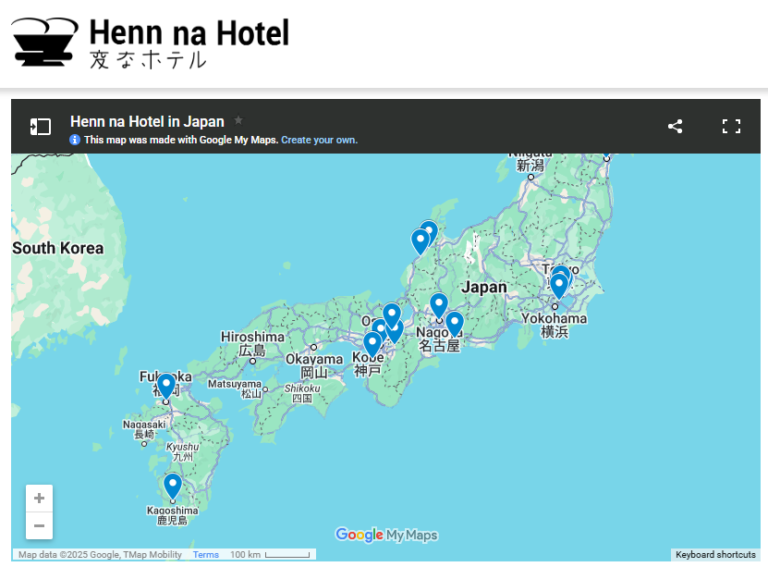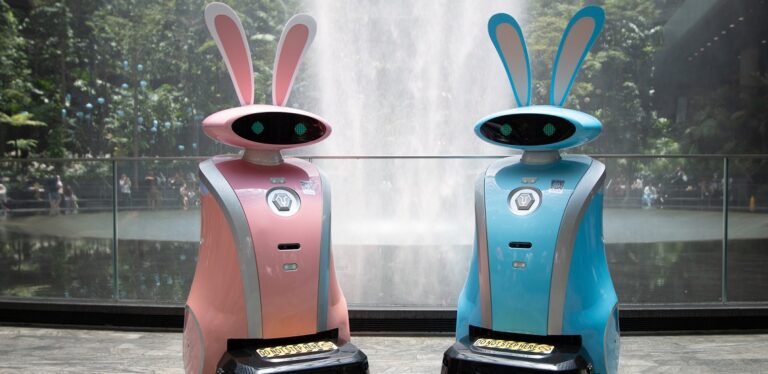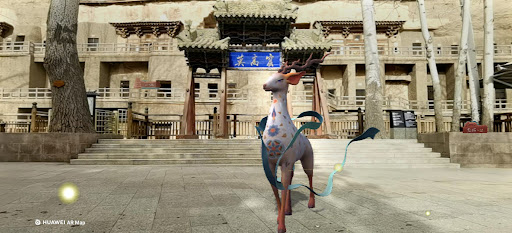
The adoption of robotics in the travel, tourism & hospitality sector. Part 2

The second stop on our journey into the applications of robotics in the tourism sector is in East Asia, where we land after several hours of flight. Who knows if this challenging transcontinental journey will one day be made easier by new, ever faster and more efficient machines. In the meantime, we are feeling a bit of a backlash and jet lag is creeping in.

Japan, South Korea and Singapore: the robotic revolution in tourism is already here
East Asia, especially in the various declinations of Japan, South Korea and Singapore, is known for the rapid adoption of robotics in various sectors, and tourism is no exception. The two Far Eastern companies have two advantages over Europe – much more open, interested and curious societies regarding the adoption of robots (even in Japan, service robots for the care of the elderly seem to be an important solution to accompany the elderly in a society that is aging very quickly and that does not seem to have solutions), and the presence of large historical industrial conglomerates, which have been investing in these technologies for years, such as SoftBank Robotics (Pepper, NAO), Honda (ASIMO), Toyota, Sony (Aibo) for Japan, Hyundai Robotics, Samsung and LG for South Korea.
In Japan, the rise of robotic technologies in tourism reflects the country’s culture of precision, efficiency and hospitality. Robots in Japanese hotels, airports and theme parks offer an innovative experience to tourists.
An example is the Henn-na Hotel chain, known as the first chain of hotels managed by robots, with robotic receptionists, porters and cleaning staff. The receptionists are robots and robotic arms handle the delivery of luggage to the guest rooms. This automation allows the hotel to provide efficient service while reducing labor costs.
Over the years, several new technologies have been developed, such as humanoid robots, light holograms, dinosaur robots, and have spread throughout the country. The group has also opened two hotels abroad, in South Korea and the United States respectively.
While there are several cases of customer-machine interaction in the hotel sector in Japan, and it is a topic that is almost no longer surprising (unlike the examples we brought in the previous article for the Italian dimension, still in the “startup” phase), in the same way Japanese theme parks and museums use robots to provide information, assist in navigation and even engage in entertainment. This integration of technology helps improve operational efficiency, while enhancing the visitor experience.
South Korea and Singapore, as anticipated before, are also noteworthy players in the tourism robotics landscape. Initiatives supported by the South Korean government promote robotic services in airports and tourist sites, such as the concierge robots at Incheon International Airport in Seoul. It employs concierge robots to assist travelers with directions, check-in and general information. These robots help enhance the airport’s reputation as one of the most efficient and technologically advanced travel hubs in the world.

Singapore, with its ambitious “Smart Nation” initiative, which aims to transform the city-state into a digitalized nation, using technology to improve the lives of citizens, stimulate economic growth and enhance public services, is a true laboratory for robotics and new technologies also applied to the tourism sector.
Launched in 2014, the initiative focuses on improving the quality of life through various projects and programs. To this end, the city state has integrated robots into various services aimed at tourists, from robot guides to automated kiosks in social media hot spots. Robot guides active at “Gardens by the Bay” At Gardens by the Bay in Singapore, robot guides help visitors navigate the expansive park, providing information about the flora and fauna on display. These robots offer personalized experiences, providing information in multiple languages and assisting visitors with questions in real time.
China: A Huge Market for Robotics in Tourism
China is a global leader in the adoption of robotics, and its tourism sector is no exception. The country’s ambitious plans to lead in AI and robotics are being reflected in its tourism sector, with investments in robot concierge services, automated hotel check-ins, and AI-powered customer service becoming a hotbed of robotic tourism innovation, not just in East Asia.
In cities like Shanghai and Beijing, robots are often found in hotels, museums, and airports, providing information, guiding tourists, and providing entertainment. Beijing is currently one of the most dynamic places for research, production, and policy planning for the development of a whole new industry: humanoid robots. It is also the place, an ecosystem of businesses, politics, universities, and a host of top-tier national tourism destinations where technologies can be tested. It will not be difficult, soon, to see humanoid robots on the streets of the capital, walking with Pekingese, or to come across a robot dog or a police robot in the Wangfujing area. In this sense, tourists who will go to the capital of China will already have an experience of interaction with robots. Humanoid robots could be used in the tourism sector of China with implications yet to be defined and with immense potential.
HOTEL – Let’s start our analysis of robot-tourism integration with Chinese hotels. Shanghai’s M Social Hotel has integrated robots to handle guest services, including check-in, room delivery (such as towels or toiletries), and even room service.
Hangzhou’s Fly Zoo Hotel, operated by Alibaba’s travel arm Fliggy, is a prime example of robotics in customer service. The futuristic hotel employs robots for a variety of tasks, including check-in, room service, and concierge services. Guests can check in using facial recognition technology, and robot butlers deliver items to their rooms. This technology reduces the need for human staff and minimizes wait times, significantly improving the efficiency and convenience of the guest experience.
AIRPORTS – As in the previous cases, airports, the first place a tourist “contacts” with the destination country, are the ones to look to for interesting innovations in China. At Guangzhou Baiyun International Airport, robots are being used for baggage handling, transporting bags from check-in counters to sorting areas and to various flights. This automation helps improve operational efficiency and reduce human labor in crowded and high-traffic places such as airports.
Beijing Capital International Airport has introduced customer service robots to assist travelers with information and directions. The robots, which are multilingual, help passengers navigate the airport, find gates, and answer common questions. By providing real-time information and directions, these robots enhance the overall travel experience and reduce the stress associated with navigating a busy airport.

OTHER DESTINATIONS – Finally, we would like to highlight the beautiful experience of the Dunhuang Caves in northwest China. An iconic place, part of the ancient Silk Road, with fascinating landscapes and high-quality relics.
In order to improve its technological level, face new challenges and solve the annual problems related to overcrowding in tourism, the city of Dunhuang has signed a cooperation agreement with the Chinese technology giant Huawei in recent years.
Huawei was chosen to build the “Feitian Cloud Data Center”, thanks to its expertise in cloud computing, big data, Internet of Things, mobile Internet and artificial intelligence. Under the agreement, the center has implemented new platforms covering aspects of family life, transportation, travel, healthcare, education and public information.
The Dunhuang Academy and Huawei launched a virtual tour of the Mogao Caves last April. Using the “Hetu AI Platform”, visitors were able to have an immersive experience outside the caves. Using a Huawei phone model, visitors were able to observe the details of the murals outside the cave, thus contributing to the protection of cultural relics and, at the same time, increasing the amount of information that visitors can obtain.
Technologies are also being used to promote the safety of the city. Dunhuang launched a “Safe City Project” with the cooperation of the “National Champion”, integrating the functions of real-time monitoring, audio retrieval, voice intercom, digital map and data storage.
Our final considerations
- In this second stage we presented some cases of integration of robotics, new technologies in the tourism sector of Japan, Singapore, South Korea and China. Below are some general considerations/reflections that we feel we can draw in this stage of our exploration.
- The interaction between robotics and new technologies and tourism seems more advanced in East Asia than in Italy, and continues at a fast pace and with continuous new innovations that are slowly but inexorably changing the experience of tourists in this part of the world.
- These countries are more accustomed to innovations in the robotics field, and at the same time are more open to innovations. Large national companies play a key role in the production of robots to be used in the tourism sector. Tourism, in this case, is a sector that is affected by the ecosystems of East Asian innovations.
- These countries can count on national development projects in the robotics, AI and new technologies field that lead to a faster implementation also in the tourism sector.
- China in particular has a market (or rather, many markets) of enormous dimensions with thousands of large cities and enormous potential for experimentation.
- Even in this area, it is important to study, verify and then “bring back” the successful experiences of integration between robotics and new tech in East Asia, without however thinking of having already lost any potential competition in this area. It is not said, a priori, that the Asian model is better or more performing than the Italian or European one
Written by Marco Bonaglia and Antonio Frisoli



